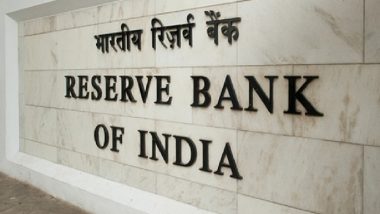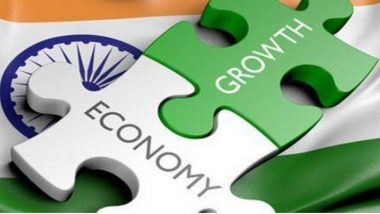New Delhi, March 7: Moody's Ratings on Thursday raised India's GDP growth forecast for FY24 to around 8 per cent from 6.6 per cent on the back of strong domestic consumption and capital expenditure. The estimate comes a day after RBI Governor Shaktikanta Das said the economic growth in the current financial year could be close to 8 per cent in view of the third quarter GDP data released by the government.
The latest estimate of Moody's is about 140 basis points higher than the earlier projection of 6.6 per cent made in November 2023. The National Statistical Office (NSO) has projected 8.4 per cent growth in December quarter of the current financial year. It has also revised GDP estimates for the first and second quarters to 8.2 per cent and 8.1 per cent from 7.8 per cent and 7.6 per cent, respectively. India Growth Forecast 2023: Moody’s Raises Country’s Growth Forecast to 6.7% on Robust Underlying Economic Momentum.
"We expect India to be the fastest-growing economy among major G20 countries, with its real GDP growth to accelerate to around 8 per cent in the fiscal year ending March 2024 (fiscal 2023-24) from 7 per cent in fiscal 2022-23," Moody's said in a report.
Government capital expenditure and strong domestic consumption will underpin India's economic growth. Moreover, India is poised to benefit from increased global trade and investment opportunities arising from companies' strategies to diversify away from China, it said. India GDP Growth 2023–24: Gross Domestic Product Grows at 7.8% in April-June Quarter, Continues To Be Fastest Growing Major Economy.
"We expect India's inflation rate will decline to 5.5 per cent in 2023-24 from a peak of 6.7 per cent in fiscal 2022-23, and further disinflation will support monetary easing going forward," it said. With regard to the banking sector, the report said, non-performing assets (NPAs) will continue to fall as the operating environment improves.
The system wide NPA ratio dropped to 3.2 per cent as at September-end 2023 from a peak of 11.2 per cent at the end of March 2018 because of recoveries and write-offs of legacy problem loans. Slippage ratios – or the ratios of newly accredited NPAs to total standard assets during a period – will stay low, helped by India's strong economic growth, it said.
"We expect banks' Common Equity Tier 1 ratios to decline 50-80 basis points because of increase in risk weights for exposures to NBFCs and unsecured retail loans," Moody's said. Still, banks' capitalization will remain strong as their internal capital generation keeps pace with capital consumption, it said, adding, they will also be able to raise capital easily if needed, given India's buoyant equity market.
On the profitability, the report said, it will remain at healthy levels but Net Interest Margin will witness marginal decline as banks reprice maturing deposits at higher rates to fully reflect previous hikes in prevailing interest rates. The banking sector's profitability has improved substantially in the past five years mainly because of decrease in loan-loss provisions amid improvements in asset quality, it said.
Banks' funding has tightened in the past two years as credit growth has outpaced deposit expansion, with the system wide loan-to-deposit ratio (LDR) rising to 75.1 per cent as of March 31, 2023 from 64.9 per cent two years earlier. LDRs are unlikely to rise further, however, as loan growth slows, banks' liquidity will remain adequate thanks to existing regulatory requirements.
(This is an unedited and auto-generated story from Syndicated News feed, LatestLY Staff may not have modified or edited the content body)













 Quickly
Quickly




















